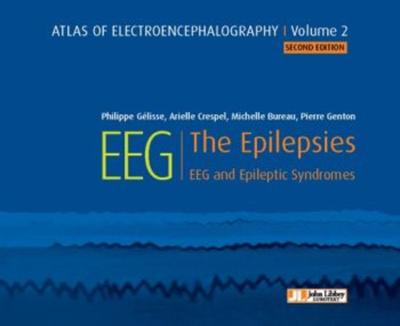Nous utilisons des cookies pour améliorer votre expérience. Pour nous conformer à la nouvelle directive sur la vie privée, nous devons demander votre consentement à l’utilisation de ces cookies. En savoir plus.
Atlas of electroencephalography - Volume 2
EAN : 9782742015917
Paru le : 4 juil. 2019
-
 Livraison gratuite
Livraison gratuite
en France sans minimum
de commande -
 Manquants maintenus
Manquants maintenus
en commande
automatiquement -
 Un interlocuteur
Un interlocuteur
unique pour toutes
vos commandes -
 Toutes les licences
Toutes les licences
numériques du marché
au tarif éditeur -
 Assistance téléphonique
Assistance téléphonique
personalisée sur le
numérique -
 Service client
Service client
Du Lundi au vendredi
de 9h à 18h
- EAN13 : 9782742015917
- Réf. éditeur : 044206
- Editeur : John Libbey
- Date Parution : 4 juil. 2019
- Disponibilite : Disponible
- Barème de remise : NS
- Nombre de pages : 458
- Format : H:305 mm L:250 mm E:22 mm
- Poids : 1.95kg
-
Résumé :
Fully revised and updated, this second edition of the second volume of the Atlases of electroencephalography series includes more than 2/3 new high-quality digital figures. A new Classification approach to epileptic seizures and to the epilepsies became official in 2017. Several aspects in terms of terminology have been included in this book and most of the chapters have been rewritten.
The second volume of this series on the practical use and interpretation of EEG focuses on epilepsies in their diversity. It is richly illustrated, and each EEG plate is analyzed in order to highlight the most significant elements to be used both for the diagnosis and interpretation. The originality of this textbook lies in its patient-based approach, thereby avoiding the pitfall of a formal presentation of EEG documents without their clinical context. Hence electroencephalography is placed at the core of the diagnostic and therapeutic discussion concerning patients with epilepsy.
Given the practical orientation of this Atlas, the focus is on common forms of epilepsies; nevertheless, some less common, more intriguing forms have also been illustrated. A synthetic text summarizes the present approach to the main epilepsy categories.
This Atlas is designed for all the actors who may be involved with patients with epilepsy. Physicians who deal with EEG will find it a valuable tool to improve the education of their early years, to help them with their interpretations later on, and for teaching purposes when more experienced. But it will also prove useful for all the physicians interested in epilepsy, as well as EEG technologists intent on providing quality recordings, and other professionals. Thorough understanding of human epilepsies requires extensive knowledge of their EEG correlates.











